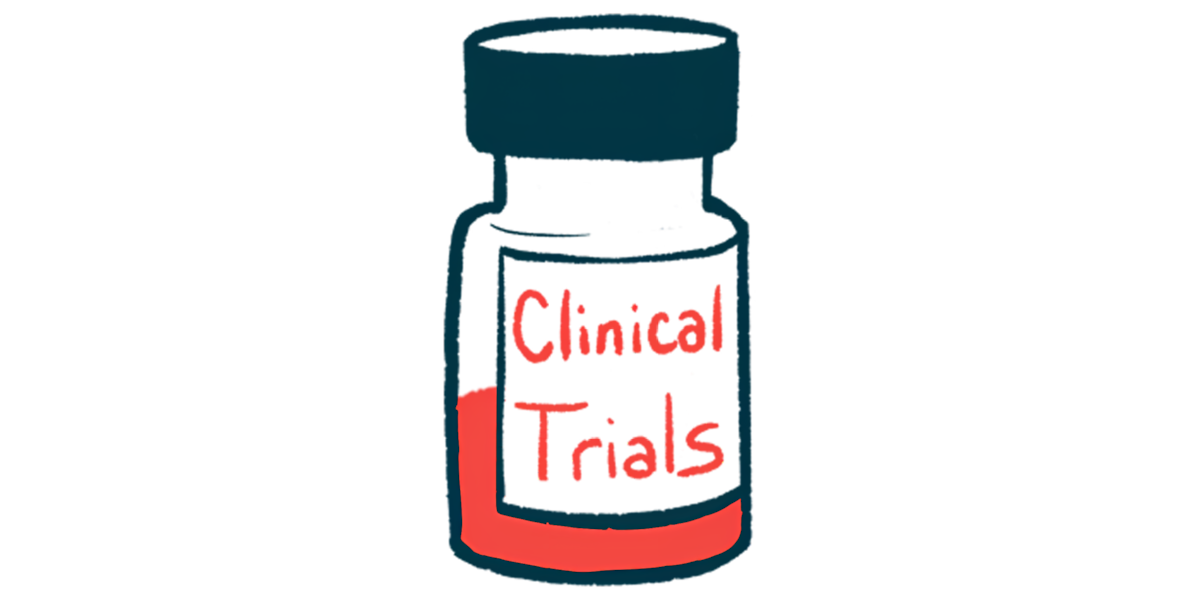Cemdisiran significantly eases disease activity in gMG adults
Regeneron plans to apply for approval to market therapy in early 2026
Written by |

Cemdisiran, an under-the-skin injection therapy given every three months, significantly reduced disease activity in people with generalized myasthenia gravis (gMG) after six months of treatment.
That’s according to data from the Regeneron Pharmaceuticals-sponsored Phase 3 NIMBLE study (NCT05070858), which evaluated cemdisiran as a monotherapy, as well as in combination with pozelimab, against a placebo in 288 adults with gMG. The combined therapy also significantly reduced MG activity, but not to the same extent as cemdisiran alone.
Based on the trial results, where both primary and key secondary goals were met, the company plans to submit an application seeking approval to market cemdisiran as a monotherapy early next year, pending discussions with the U.S. Food and Drug Administration.
“The NIMBLE trial results underscore the potential for cemdisiran to offer a best-in-class profile for those suffering with myasthenia gravis, providing for robust efficacy with a convenient quarterly subcutaneous administration,” George D. Yancopoulos, MD, PhD, president and chief scientific officer at Regeneron, said in a company press release.
Cemdisiran blocks complement activation by suppressing key protein
MG is a chronic autoimmune disease caused by self-reactive antibodies that target proteins within the neuromuscular junction, the place where nerve cells connect to the muscles they control.
When MG-causing antibodies bind to their target, they can activate the complement cascade, a component of the immune system. This causes damage and further disrupts communication between nerves and muscle cells, resulting in hallmark symptoms of MG, such as severe muscle weakness and fatigue.
Cemdisiran is a small interfering RNA, or siRNA, that blocks complement activation by suppressing the production of C5, a complement protein. Pozelimab, approved in the U.S. as Veopoz (pozelimab-bbfg) for complement-mediated CHAPLE disease, is designed to bind to C5 and suppress its function.
Either alone or in combination, cemdisiran and pozelimab aim to prevent complement activation, enhance nerve-muscle communication, and alleviate MG symptoms.
NIMBLE, taking place at 116 sites worldwide, enrolled 288 adults with gMG who tested positive for self-reactive antibodies against the acetylcholine receptor, the most common MG-driving antibody.
Participants were randomly assigned to receive cemdisiran (600 mg) every 12 weeks, a combination of cemdisiran (200 mg) and pozelimab (200 mg) every four weeks, or a placebo every four weeks for 24 weeks, or about six months.
After completing the 24-week double-blind treatment period, participants continued treatment in an extension study lasting 28 weeks, followed by an open-label extension period of approximately 16 months and an off-treatment follow-up period of 52 weeks, or one year.
Monotherapy outperforms dual therapy in reducing signs of MG activity
In blood tests, the combination therapy blocked complement activity to a greater extent than cemdisiran alone (99% vs. 74%). Despite these findings, when administered as a monotherapy, cemdisiran outperformed the dual therapy in reducing signs of MG activity in clinical assessments.
Cemdisiran, with or without pozelimab, met the study’s primary goal of significantly reducing MG severity compared with a placebo, as demonstrated by a drop in the scores of the MG Activities of Daily Living (MG-ADL) scale. This patient-reported measure assesses the extent to which daily functions are affected by gMG. These include mobility, speaking, eating, breathing, and vision.
Treatment with cemdisiran as a monotherapy led to a greater decline in MG-ADL scores from the study’s start to week 24 than the combination therapy (4.52 vs. 3.96 points). This indicates less disease activity. In addition, the proportion of patients who saw their MG-ADL scores improve by at least 3 points was higher in the cemdisiran group than in the combination group (76.6% vs. 65.7%).
In key secondary measures, cemdisiran, with or without pozelimab, significantly improved scores on the Quantitative MG (QMG) scale, a physician-administered assessment that evaluates vision, speaking, swallowing, breathing, and limb function.
The results of the NIMBLE trial confirm that, in myasthenia gravis, robust efficacy can be achieved without complete complement blockade.
Similar to MG-ADL scores, QMG scores dropped, or improved, more in patients treated with cemdisiran alone than in those given the combination therapy over the course of six months (4.24 vs. 3.32 points). There was also a higher proportion of patients whose QMG scores dropped by at least 5 points in the cemdisiran group than in the combination group (48.4% vs. 35.8%).
“The results of the NIMBLE trial confirm that, in myasthenia gravis, robust efficacy can be achieved without complete complement blockade,” said L. Andres Sirulnik, MD, PhD, senior vice president and hematology clinical development unit head at Regeneron.
There were no reports of meningococcal infections, a serous side effect of complement-targeted therapies, and no discontinuations due to adverse events in the cemdisiran treatment group. The percentage of treatment-emergent adverse events was similar across all treatment groups, with the most common including MG worsening, upper respiratory tract infection, urinary tract infection, nasopharyngitis (common cold), headache, rash, injection site reaction, and diarrhea.
“The potential for best-in-class efficacy with less than complete complement blockade with cemdisiran monotherapy may also provide for a more favorable safety profile,” Yancopoulos said.
Detailed findings from NIMBLE will be presented at a future medical meeting, according to Regeneron.








Leave a comment
Fill in the required fields to post. Your email address will not be published.